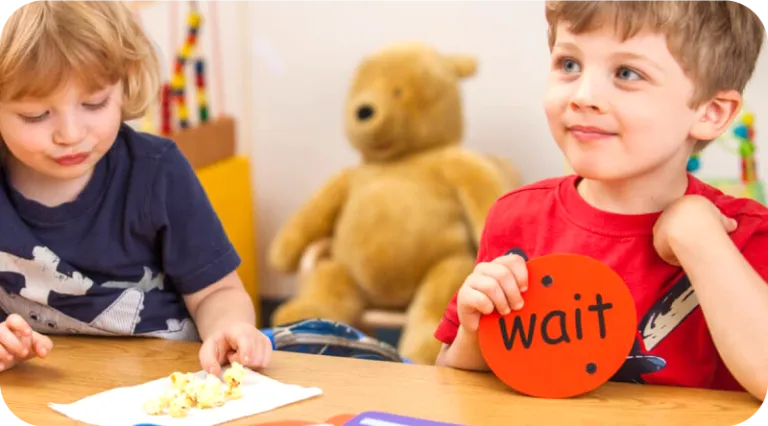You may have heard people talk about PECS or perhaps your child’s therapist may have recommended them to you.
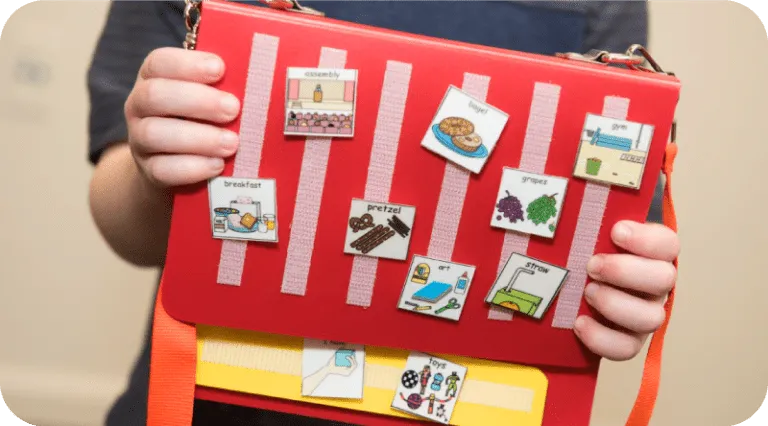
Often all people know about PECS is that they are those little pictures and the first reaction of parents is to ask why their child should use those because they want to hear their child talk and giving someone pictures doesn’t seem much like helping them learn to vocalize and use their voice. Research does show that it helps our kiddos learn to speak so this blog is to clear up what PECS are, why they are beneficial and to discuss exactly how they can help your family.
What exactly are PECS?
PECS stands for Picture Exchange Communication System and this system was first developed by Andy Bondy and Lori Frost in 1984 as a way to teach children with autism how to communicate using a quick, independent and functional system. PECS is considered to be an alternative/ augmentative communication system and has been used with people of all ages who have different cognitive, physical and communication challenges. In other words, it is a system that allows people to communicate without relying on speech. Some children have used it while their speech is developing and others have used it for longer periods of time as their ongoing main form of communication.
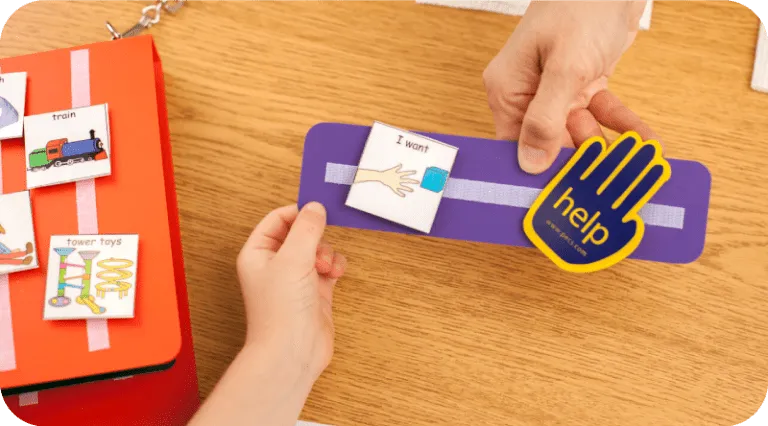
It is based on applied behavior analysis (ABA) principles which recognize that if a behavior leads to something that a person wants then they will repeat the behavior. If the behavior doesn’t provide any rewards then it is less likely to occur again. The PECS system uses small cards with pictures to represent items or actions that your child may desire. When children begin to use the PECS picture cards, they are then immediately given the item or action they’ve asked for. This in turn reinforces the behavior of using the cards and makes it more likely that the child will continue to use the cards to make requests and communicate. A child can be taught to use PECS to communicate a request of any kind that can be reasonably displayed or symbolized on a picture card. Research shows that PECS helps develop that understanding of shared communication between two people and can have a positive influence on overall speech development with someone who learns to use this system.

How do you know if PECS are right for your child?
Although PECS have been used primarily for children who have been diagnosed with Autism, it is appropriate to be used with anyone who has difficulty with spoken language such as those who have developmental delays or traumatic brain injury. There is also no age limit on who can use PECS although most of the research around using it has focused on children to date. The ability to discriminate between pictures is not a skill that is needed as that will be taught to the person who is learning to use the program. If your child does already have the ability to discriminate between pictures then this can help them learn the system faster however it is not a required skill to start with the PECS system.
When deciding if your child should use PECS there are a few indicators which can indicate more success. A child who is ready to learn PECS should show signs of having intentional communication with others. An example of this would be if your child is dragging you across the room to an object they wish to have or if they are pointing to an object they wish for you to give them. Another sign that your child would be successful with PECS is if they have items or activities in their life that are highly preferred for them already. This makes it easier to use these items to help the child learn the power that exists in communication as they will already be drawn to engage in behaviors that help them access these motivating items or activities. It should be noted that if your child does not have strong preferences it is still possible for them to learn how to use PECS, however, it just may take longer for them to learn.
How does my child learn to use them?
The PECS system consists of six phases of learning and it first begins by teaching your child to give a single picture of the desired item or activity to a person who immediately takes the picture of the requested item/activity and provides it to the child. The early phases of PECS focus on learning to use this exchange system and then move on to teaching the child how to generalize this skill to use it with different people, in different places and in various circumstances. During these early phases it is important that the PECS are taught to the child and used on a daily basis in order to provide consistent practice and reinforcement when learning the system.
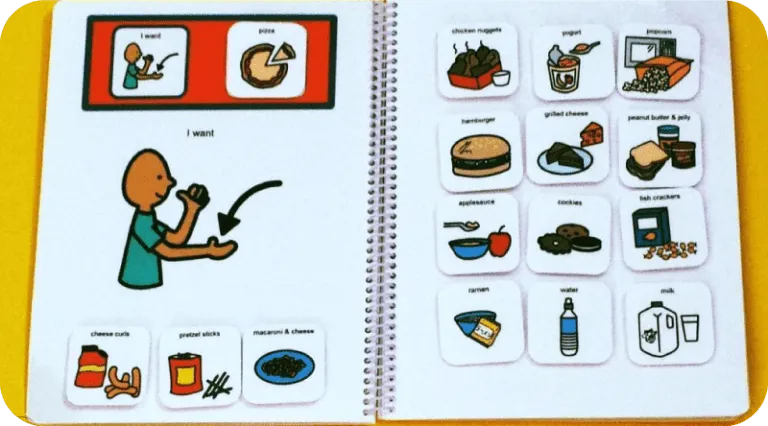
Although in the beginning the PECS will focus on being used with highly preferred items, as children move through the six phases they learn to better discriminate between the pictures. Therapists can work with you to teach you the right amount of prompting and modeling to provide to your child to help them learn to use the PECS effectively. Over time children will be challenged more and learn how to use them to form sentences. In the most advanced phases, children are taught to use the PECS for advanced skills such as answering questions and commenting in conversations in a more complex manner.
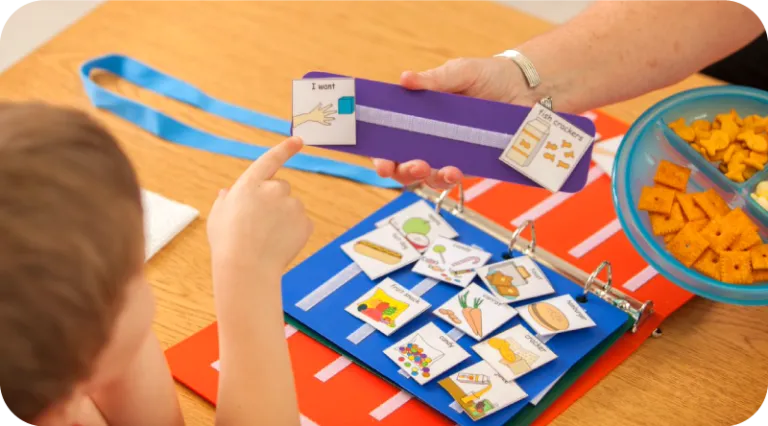
How does this help my child and my family?
There are multiple benefits to using PECS with your child and that is why they are so popular for therapists to recommend to families for use. Often children with a decreased ability to communicate may develop behaviors such as tantrums due to frustration over not being able to make their needs or feelings known to others. Studies show that using the PECS decreases tantrums and odd behaviors because when a child learns to use PECS they improve their ability to communicate which helps decrease their frustration level.
In addition, having children start with PECS can help avoid creating a negative emotional history related to speech when it is difficult for them. When children struggle with speech and require a lot of prompting to help them talk, this can lead to prompt dependency developing in the child where they then require a prompt to make any sound. PECS can help children with these higher needs for speech development by providing prompting in a physical manner instead of a verbal manner. This is important because physical prompts are easier to take away than verbal prompts in order to push a child towards independence with speaking. Moreover PECS are easier to use as physical prompts than sign language as sign language requires higher amounts of motor planning and coordination which can be difficult if your child is experiencing delays with their motor skills also.
In summary, PECS provides an inexpensive, low tech language intervention which can help families teach their child the power of communication with others. Although PECS are not designed to teach speech, speech is encouraged indirectly as children first learn to associate the picture cards with the objects which can help them then learn to associate words with those objects. As children exchange picture cards with others around them to gain what they desire, they learn the benefits of communicating with others and are encouraged to communicate more often. Research has shown that some children will begin to use verbal language spontaneously after learning to use the PECS as once they learn that making requests of others can get them things they want, it is easier for them to learn that speaking is faster than using the PECS themselves. If you would like more information on using PECS and think they may be beneficial for your child please reach out to your speech therapist and discuss it with them at your next session. They will be able to guide you in beginning use of the PECS system with your child!
